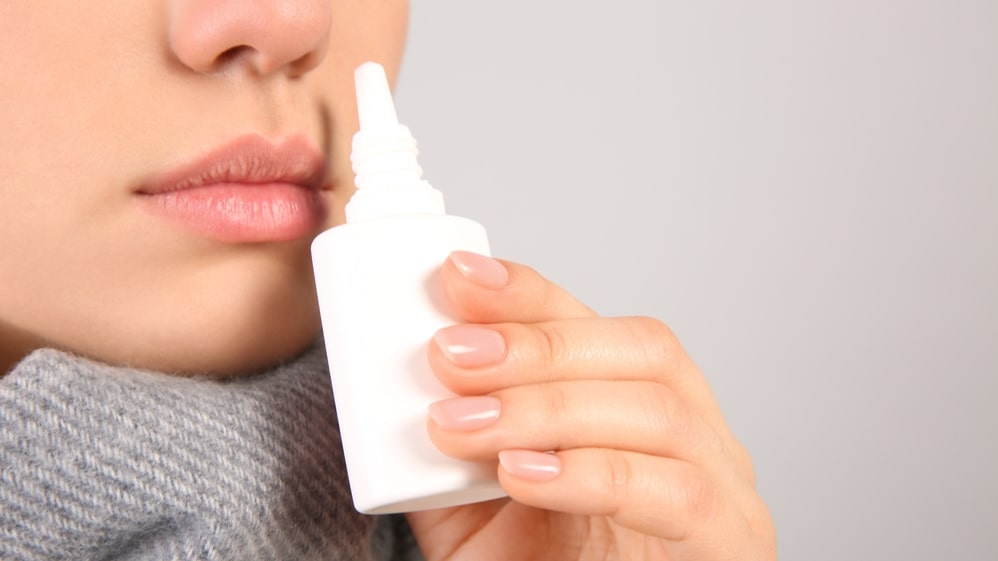Nasal drops are liquid preparations intended for installation into the nostrils usually with the help of a dropper. Nasal drops are mostly based on aqueous vehicles although oily drops (containing liquid paraffin of suitable viscosity) are not uncommon. Oily vehicles are generally not preferred since the oil may retard the ciliary action of the mucosa and may even cause lipoid pneumonia if drops of the oil enter the lungs. Nasal drops are generally formulated to resemble the nasal secretions as closely as possible. Thus, these are usually isotonic and slightly buffered to maintain a pH of 5.5 to 7.5. Additionally, the preparation is made slightly viscous with the help of thickening agents like methyl cellulose to match its viscosity with that of the nasal secretions.
Commercial nasal preparations usually contain decongestants, antibiotics, antihistamines, and drugs for asthma prophylaxis. Examples include Ephedrine Nasal drops, Phenylephrine Nasal drops, etc.
Nasal drops are usually supplied in amber-colored fluted bottles with rubber teat and dropper closure.
Example: Ephedrine Nasal Drops
Ephedrine Hydrochloride – 0.5 g
Chlorbutol – 0.5 g
Sodium Chloride – 0.5 g
Purified water q.s to 100 ml
The drops may be prepared by first dissolving Chlorobutol in a small quantity of hot water followed by cooling the solution to room temperature. Other ingredients are then dissolved in the solution, which is filtered and the final volume is made up of water. These drops are used as a decongestant with Ephedrine acting as the active medicament. Chlorobutol acts as the preservative while Sodium chloride is added to make the solution iso-osmotic with nasal secretions.
Make sure you also check our other amazing Article on : Mouthwash
